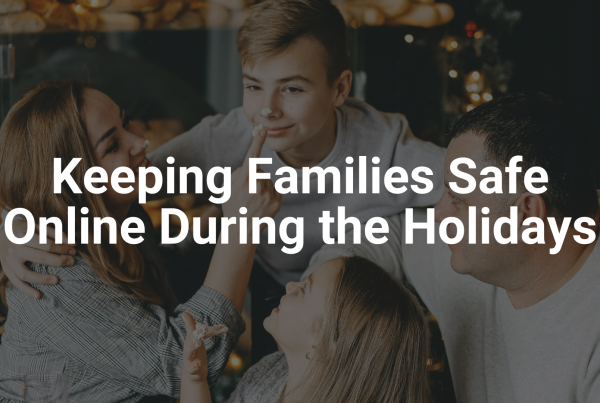Authors: Dr. Abbie Maroño
Published: July 14, 2025
There’s an old saying that “children are sponges,” referring to their impressive ability to absorb and learn new information at an incredible speed. This is largely due to their neuroplasticity—the brain’s ability to reorganize itself by forming new neural connections. During early childhood, the brain is particularly adaptable, allowing children to quickly learn language, behaviors, and social cues.
But children don’t only soak up knowledge—they absorb and internalize emotional experiences around them with the same intensity. As such, children are highly sensitive to the emotional climates created by their caregivers. This can be both a blessing and a curse. When the environment is safe and nurturing, children develop secure attachments, learn healthy emotional regulation, and feel confident in their ability to trust and form relationships. However, in unstable or negative environments, children often internalize negative emotions or emotional inconsistency, leading them to blame themselves for the distress or instability around them.
Why Self-Blame Happens in Children
Children’s tendency toward self-blame is closely tied to their cognitive development. During early childhood, children exhibit egocentric thinking—the belief that they are at the center of their world. When emotional turmoil arises, such as parental conflict, inconsistent affection, or negative emotions from caregivers, children often assume they are responsible. Because they are not yet capable of fully understanding the complexities of adult emotions or external stressors, they internalize the instability as their own fault.
Self-blame can also serve as a coping mechanism for children. When faced with emotionally inconsistent or negative environments, children blame themselves because it gives them a sense of control. Believing that they are the cause of their caregiver’s distress allows them to hold onto the illusion that by changing their behavior, they can “fix” the situation. This sense of control, although misguided, is less frightening than accepting that their caregivers are unpredictable or unreliable, which can feel overwhelming and terrifying for a young child.
Long-Term Consequences
The internalization of negative emotions and emotional inconsistency during childhood can have profound long-term effects on emotional and psychological development. Research shows that children who blame themselves for emotional turbulence in their environments are more likely to develop low self-esteem, anxiety, and depression as they grow older. Over time, this self-blame can become a deeply ingrained cognitive pattern, leading to a lifelong tendency to take responsibility for things beyond their control, especially in relationships or stressful situations.
In fact, neurological research has found that chronic self-blame can alter the brain’s stress-response system. Children who internalize blame often exhibit heightened activity in areas like the amygdala, which is responsible for processing fear and stress, and lower activity in regions like the prefrontal cortex, which is involved in emotional regulation and problem-solving. These changes can create long-lasting vulnerabilities to negative self-perception and maladaptive coping strategies throughout life. Over time, this altered brain circuitry reinforces patterns of self-blame, making it difficult to break the cycle of self-critical thinking in adulthood.
What To Look Out For
Identifying self-blame tendencies in children is crucial for early intervention. However, it’s important to note that occasional behaviors are not necessarily a cause for concern. We all have good and bad days, so a child showing signs of self-blame once doesn’t automatically mean they are adopting it as a coping mechanism. What parents and caregivers should pay attention to are enduring patterns—when these behaviors are observed repeatedly, it could be an indicator that the child is internalizing negative emotions as self-blame.
Parents should be mindful of certain behaviors that may point to self-blame. These include frequently apologizing for minor issues, taking responsibility for others’ emotions, or expressing feelings of being “bad” or “not good enough.” Children who engage in self-blame may also withdraw during conflict, show heightened anxiety when others are upset, or try to “fix” problems that aren’t their responsibility. For example, a child might say, “If I had been quieter, maybe Mommy wouldn’t have gotten upset,” even when the situation was completely unrelated to their behavior.
Additionally, children who blame themselves often internalize criticism more deeply than expected, believing that any negative feedback reflects a personal failure. They may avoid discussing their feelings, leading to suppressed emotions and unresolved guilt. Recognizing these behaviors early can prevent the development of more serious emotional challenges later on.
Creating Healthier Coping
The good news is that self-blame can be addressed and corrected. One of the most impactful ways to help children avoid self-blame is by validating their emotions and offering explanations that clarify their role—or lack thereof—in difficult situations. When caregivers explain that problems often stem from external factors rather than the child’s actions, children can begin to understand that not everything is their fault. For example, saying, “Mommy is upset because of work, not because of anything you did,” helps reframe their perspective and reduces the likelihood of internalizing blame.
It’s also essential to encourage children to label and express their emotions. Children who can identify and verbalize their feelings are better able to regulate them, which reduces tendencies toward self-blame. Teaching children that it’s normal to feel sad or frustrated, and that these emotions aren’t always caused by something they did, fosters healthier emotional processing. Statements like, “It’s okay to feel upset, but it doesn’t mean you did something wrong,” can help children feel more secure in their emotional responses.
Additionally, as often discussed in this blog, children learn emotional coping from their caregivers. This makes it vital for adults to model healthy responses to stress and emotional challenges. Caregivers should demonstrate self-compassion and problem-solving in stressful situations, showing children that mistakes and difficult emotions can be managed without assigning blame. For example, a parent who calmly says, “I made a mistake at work, but I’ll fix it,” models healthy emotional regulation.
In cases where self-blame has become deeply ingrained and harder to change, professional interventions such as cognitive-behavioral therapy (CBT) can be highly effective. CBT helps children identify irrational thought patterns, such as unfairly blaming themselves for situations beyond their control. By replacing these thoughts with healthier, more accurate perspectives, children can disrupt the cycle of self-criticism and develop more resilient emotional responses.
Conclusion
It’s easy to overlook just how impressionable children are to even the smallest changes or inconsistencies in their environment. We must frequently remind ourselves that children are like sponges, absorbing everything around them—good and bad. That’s why it’s essential to provide a healthy, loving environment where they can thrive. When we notice signs of self-blame in children, it’s crucial to equip them with the right tools to express their emotions, reframe negative experiences, and model healthy coping mechanisms. By doing so, we help them build resilience and reduce the long-term impact of internalized guilt.
References
Cole, D. A., Peeke, L. G., & Ingold, C. (1996). Characterological and behavioral self-blame in children: Assessment and development considerations. Development and Psychopathology, 8(2), 381-397.
Fear, J. M., Champion, J. E., Reeslund, K. L., Forehand, R., Colletti, C., Roberts, L., & Compas, B. E. (2009). Parental depression and interparental conflict: Children and adolescents’ self-blame and coping responses. Journal of Family Psychology, 23(5), 762.
Healy Jr, J. M., Stewart, A. J., & Copeland, A. P. (1993). The role of self-blame in children’s adjustment to parental separation. Personality and Social Psychology Bulletin, 19(3), 279-289.
Heyman, G. D., Dweck, C. S., & Cain, K. M. (1992). Young children’s vulnerability to self‐blame and helplessness: Relationship to beliefs about goodness. Child development, 63(2), 401-415.
Lawrence, A. J., Stahl, D., Duan, S., Fennema, D., Jaeckle, T., Young, A. H., … & Zahn, R. (2022). Neurocognitive measures of self-blame and risk prediction models of recurrence in major depressive disorder. Biological Psychiatry: Cognitive Neuroscience and Neuroimaging, 7(3), 256-264.
Lythe, K. E., Moll, J., Gethin, J. A., Workman, C. I., Green, S., Ralph, M. A. L., … & Zahn, R. (2015). Self-blame–selective hyperconnectivity between anterior temporal and subgenual cortices and prediction of recurrent depressive episodes. JAMA psychiatry, 72(11), 1119-1126.
Tanzer, M., Salaminios, G., Morosan, L., Campbell, C., & Debbané, M. (2021). Self-blame mediates the link between childhood neglect experiences and internalizing symptoms in low-risk adolescents. Journal of Child & Adolescent Trauma, 14, 73-83.





